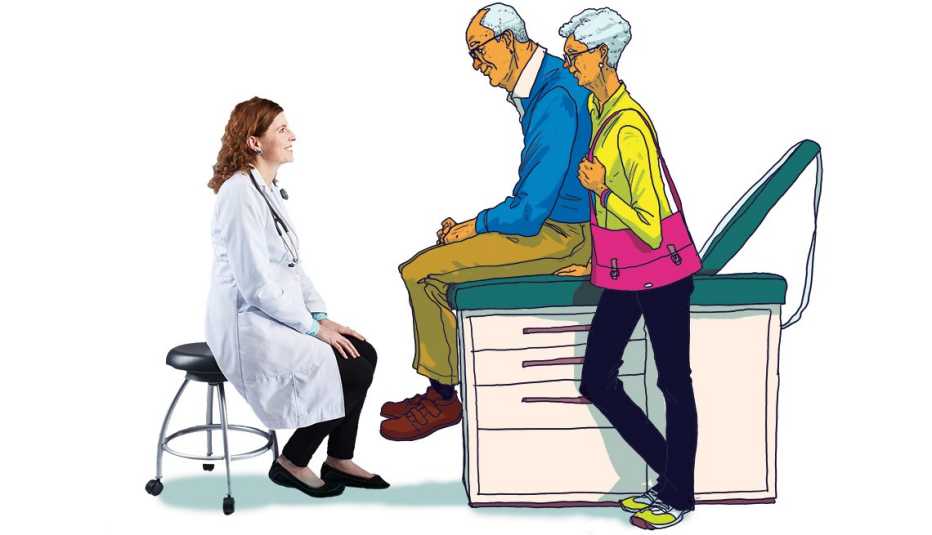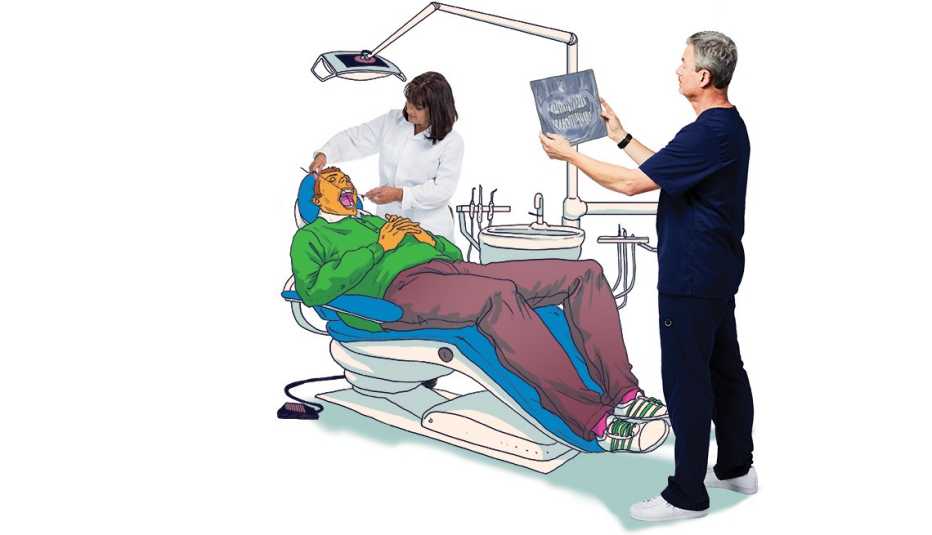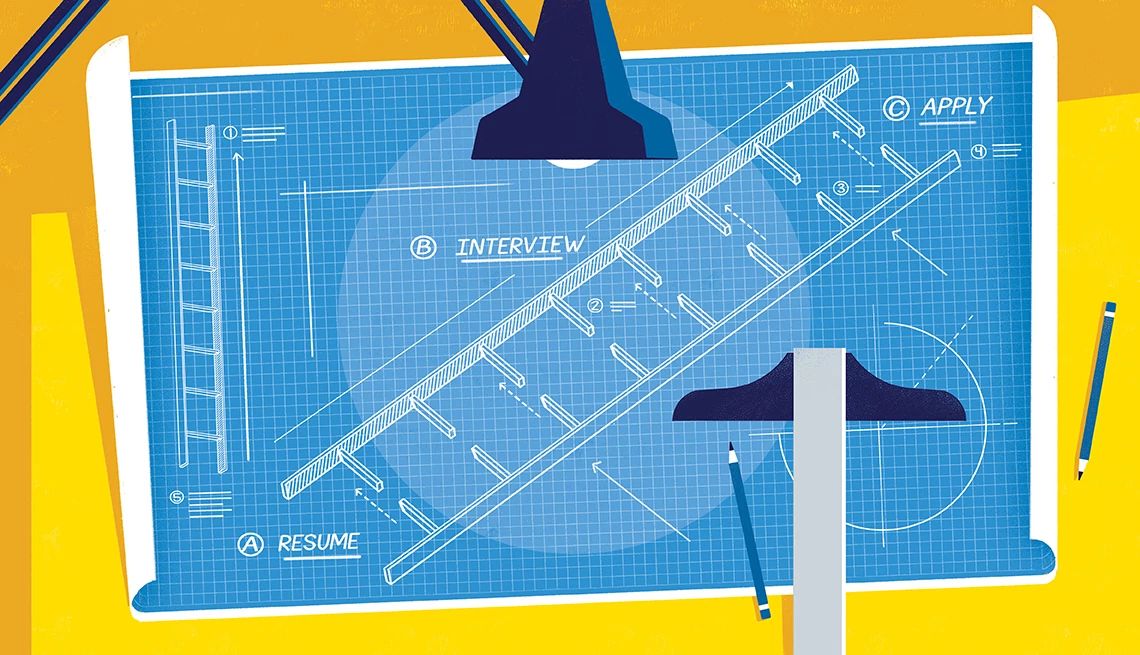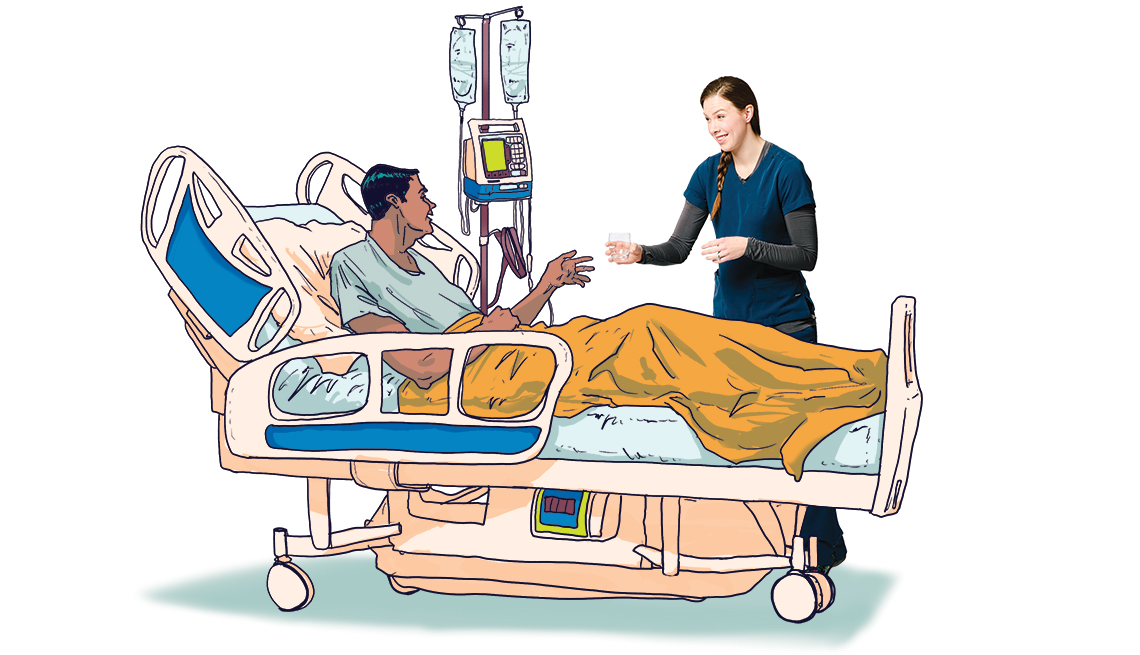AARP Hearing Center
“You can bring meds.”
—The hospital nurse
Kati Kleber, 31, is a nurse in a cardiac medical-surgical unit in Illinois.
- If you’re in the hospital, designate one point person to be your communicator. Answering questions from your family and friends takes time away from caring for you.
- Ask for pain relief earlier, please. Don’t be a hero. On a scale of 0 (pain-free) to 10 (worst ever), call the nurse when you reach about a 4. It could take me 30 minutes to bring you what you need and another 30 to 45 minutes for it to take effect. Pain interferes with healing.
- Yes, you can bring in your own drugs. If you take an expensive medication, it may be worth bringing it with you to the hospital. The drug must be in its original container with the original label. The hospital pharmacy will add a bar code so it can be documented in your chart when you take it.
“Knee surgery might not help much.”
— The doctor


Leslie Greenberg, 48, is a board-certified family physician practicing in the Reno, Nev., area.
- Please, wash up before your appointment. Bathing is important. Cologne is unwelcome.
- Your doctor knows when you’re fibbing. I have been a physician for 22 years and a mother for 17 years, so there’s not much that gets past me. If the patient gives me untruthful information or doesn’t take my advice but tells me they have, there’s not much I can do to help.
- Understand I don’t know what your drugs cost you. There are so many different insurance plans out there, and drug coverage changes every year. But I try to know what the least expensive medication is within a class of drugs. Bring your coverage booklet to appointments, or ask for a paper prescription so you can go online to determine the cost.
- Think twice about popular knee treatments. A whopping 700,000 surgeries are performed each year in the U.S. to fix tears in the meniscus, a piece of tissue between knee-joint bones. Tens of thousands more get joint injections of hyaluronic acid. But studies show these expensive and invasive treatments usually don’t help much. Your best bet: pain relievers like acetaminophen (or ibuprofen or naproxen, as recommended by your doctor), plus physical therapy.
“Always get an itemized hospital bill.”


— The medical bill advocate
Victoria Caras is a former attorney and owner of Aspen Medical Billing Advocates in Colorado.
- When you communicate with your health insurer, many of them will assign a reference or log number to the call. Ask if your insurer does, and if so, write down the number, along with the date and time of the call, the name of the person you spoke with and the information you received. It’ll make it easier to find a record of the call if you have to refer to it later on.
- Most hospital bills contain errors, but you probably can’t spot them. Errors that could yield savings for consumers are often hidden in items with hard-to-decipher hospital coding. For example, you probably can’t judge whether you used all the oxygen charged to your bill during a surgery. But do ask for an itemized bill and check to make sure you weren’t charged twice for a procedure and to verify dates of service.































































